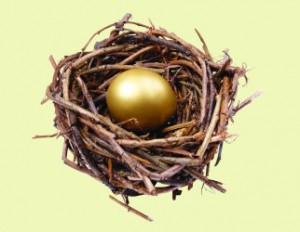Save when your deductions stop
It's nice when your CPP and EI contributions stop in the summer, but with a little discipline you can turn them into a comfortable nest-egg.
Advertisement
It's nice when your CPP and EI contributions stop in the summer, but with a little discipline you can turn them into a comfortable nest-egg.
 Every summer when payroll-stiffs meet their maximum CPP and EI contributions they see a bump in their net take-home pay. The premiums no longer being deducted usually just get incorporated back into cash flow and spent on dinner and a movie. But since you’re already used to living without spending that money, it’s found money, and it can be very useful for boosting your emergency and long-term savings. So as soon as you hit your max and those withdrawals stop coming off the top, turn them into savings.
The folks who benefit are those who make about $49,000 or more. If you’re paid semi-monthly, it means you’ll see $240.28 a month deducted for CPP and another $89 a month deducted for EI. Since the maximum for CPP is $2,217.60, and the maximum for EI is $786.76 it’ll take until about September for the deductions to stop and the extra money to show up on your paycheque.Now’s the time to start planning what you’re going to do with those savings.
That’s a nice bundle of cash to have for those extra few months of the year. It can be tempting to just add it back into your budget to pay for things like holiday shopping or a weekend get-away. But if you resist the temptation to spend, the money you’ve grown used to not having can give your savings a nice little kick. At the maximum deduction, you’re talking about just under $330 a month, or almost $1,000, in extra savings for the year.
Slap it in an RRSP or a TFSA and watch it compound. With 25 years to save and an average return of 5%, you’ll come up with almost $50,000. A little more time will get you a lot more money. Compounding your $1,000 a year for 30 years will see you to almost $70,000; for 35 years, you’re looking at almost $95,000.
If you’re a little more aggressive in choosing your investments and can pull off a 7% return, in 25 years you’ll have over $67,000, in 30 years you’ll have over $100,000, and in 35 years you’ll have almost $150,000.
Now that’s got to be worth a little instant gratification, dontcha think?
Every summer when payroll-stiffs meet their maximum CPP and EI contributions they see a bump in their net take-home pay. The premiums no longer being deducted usually just get incorporated back into cash flow and spent on dinner and a movie. But since you’re already used to living without spending that money, it’s found money, and it can be very useful for boosting your emergency and long-term savings. So as soon as you hit your max and those withdrawals stop coming off the top, turn them into savings.
The folks who benefit are those who make about $49,000 or more. If you’re paid semi-monthly, it means you’ll see $240.28 a month deducted for CPP and another $89 a month deducted for EI. Since the maximum for CPP is $2,217.60, and the maximum for EI is $786.76 it’ll take until about September for the deductions to stop and the extra money to show up on your paycheque.Now’s the time to start planning what you’re going to do with those savings.
That’s a nice bundle of cash to have for those extra few months of the year. It can be tempting to just add it back into your budget to pay for things like holiday shopping or a weekend get-away. But if you resist the temptation to spend, the money you’ve grown used to not having can give your savings a nice little kick. At the maximum deduction, you’re talking about just under $330 a month, or almost $1,000, in extra savings for the year.
Slap it in an RRSP or a TFSA and watch it compound. With 25 years to save and an average return of 5%, you’ll come up with almost $50,000. A little more time will get you a lot more money. Compounding your $1,000 a year for 30 years will see you to almost $70,000; for 35 years, you’re looking at almost $95,000.
If you’re a little more aggressive in choosing your investments and can pull off a 7% return, in 25 years you’ll have over $67,000, in 30 years you’ll have over $100,000, and in 35 years you’ll have almost $150,000.
Now that’s got to be worth a little instant gratification, dontcha think?
Share this article Share on Facebook Share on Twitter Share on Linkedin Share on Reddit Share on Email